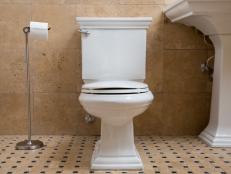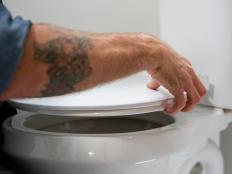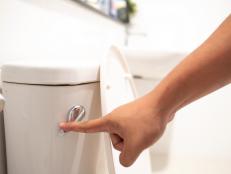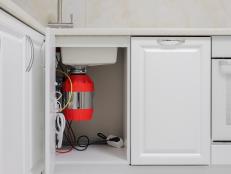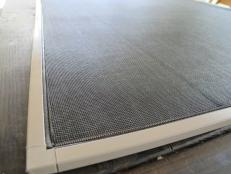How to Unclog a Toilet
Here are three ways to unclog a toilet, plus, discover some ways to prevent a toilet from getting clogged up.
One of the most common and frustrating dilemmas for a homeowner is unclogging a toilet. But, don't panic. Unclogging a toilet usually is a simple task taken care of with some basic tools — a plunger, a toilet auger and rubber o-rings — and a bit of technique. Follow the steps below to learn how to unclog your toilet and keep it from clogging again.

Illustration by Claudia Rhea
Tools You May Need:
- plunger
- toilet auger (aka - snake)
- toilet wax ring
- wrench
- shop vacuum
What to Do When Your Toilet Is Clogged
Take the lid off the tank, and push the flapper down to stop more water from entering the bowl. Then turn off the water supply located behind the toilet, at the bottom.
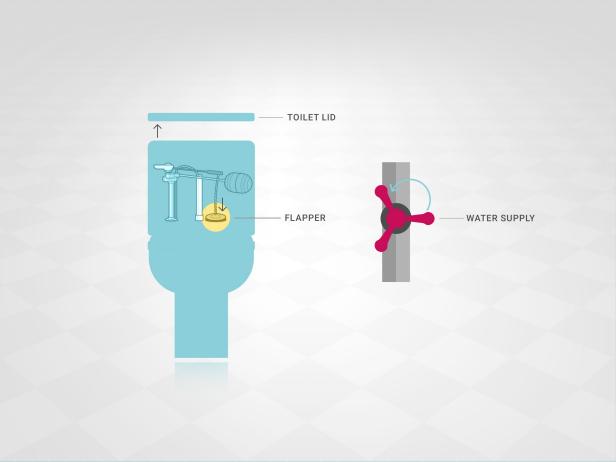
Illustration by Claudia Rhea
How to Unclog a Toilet With a Plunger
After the water is turned off, try using a conventional plunger to unclog the toilet. Be sure the water covers the cup of the plunger; if it doesn't, you may need to manually control the flapper until enough water enters the bowl. Slowly push the plunger down to clear any air bubbles, then pull and push the plunger back and forth to clear the clog.
How to Unclog a Toilet With an Auger
If a plunger doesn't work, try a toilet auger (also known as a snake). You can get one at most hardware stores for $20 to $50. The trick to using an auger is to get the cable right through the throat of the toilet. Put a little pressure on the cable and start turning the auger, extending the cable down into the drainpipe as you go. While pushing down, you should feel the auger drop into the drain. Once the auger approaches the clog, give it a little extra pressure to punch a hole in the clog, creating an opening for water to flow to the sewer or septic tank.
A plunger may also be used in conjunction with an auger in order to create enough suction to blast out any material that may still be clinging to the hole that was punched out by the auger.
Note: The toilet and the bathtub normally share a drainage pipe, so if the clog is too impacted for the auger to punch a hole, the whole clog could be shoved so deep that the bathtub becomes clogged as well. Once you unclog the toilet, be sure to check your bathtub drainage.
If Toilet Is Still Clogged, Remove It
If you can't unclog the toilet with a plunger or an auger, you'll need to remove it to get better access to the drain. At this point, it may be best to call a professional plumber. They will likely use an industrial auger that has over 100 feet of steel cable. The long-reaching auger can go far enough to hit the main sewage line to clear out the clog. If you still want to go it alone, here are the steps to removing the toilet.
Turn off and disconnect the water supply. Use a shop vacuum to remove the standing water from the toilet. Unscrew the two bolts at the toilet's base, lift the toilet and slide it forward.
Tip: Lift the toilet from the rear so any water still remaining will flow towards the front of the bowl instead of onto the floor.
Most toilets use a wax seal between the bottom of the toilet and the floor. If you remove your toilet, you should also get a new wax seal before you replace it.
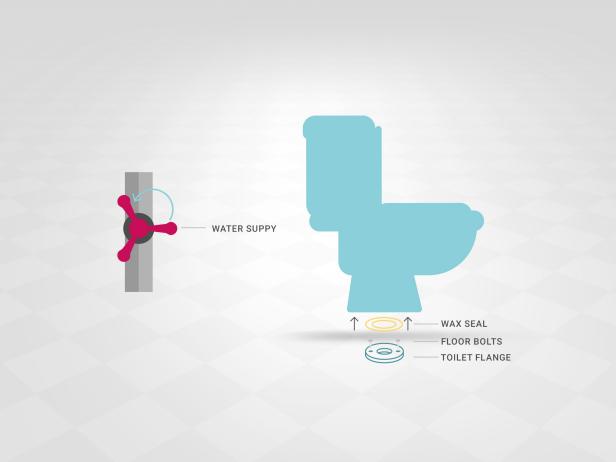
Illustration by Claudia Rhea
Reattach the Toilet
After you unclog the drain, be sure to run water from the toilet's supply line down the drain for about two minutes to ensure the clog is completely gone. Reconnect the toilet by fitting the new wax seal, then screwing the bolts back in and reattaching the water supply line. Be sure to flush the toilet a few times after replacing it to make sure the water is draining properly.
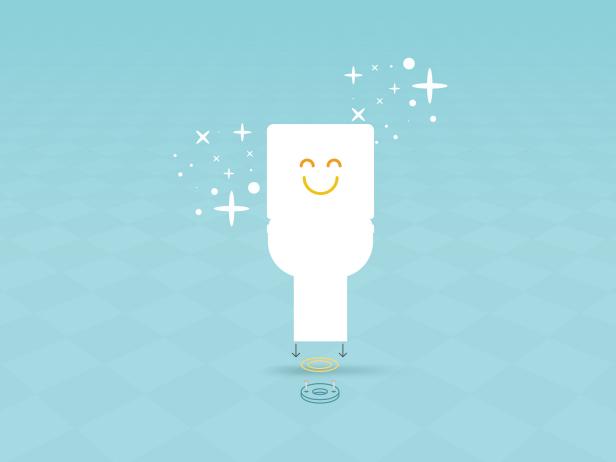
How to Prevent Toilet Clogs
To prevent a clogged toilet, and to avoid potentially costly repair expenses, follow these simple tips:
- Only flush toilet paper and human waste. That's all. So, no paper towels, diapers, cleaning and facial wipes or feminine hygiene products.
- Put a waste bin in the bathroom and preferably close to the toilet to encourage everyone to dispose of other items properly.
- Make sure your children and guests know that only toilet paper and human waste are to be flushed.

.-Battle-on-the-Beach-courtesy-of-HGTV.-.jpg.rend.hgtvcom.196.196.suffix/1714761529029.jpeg)




